Seminar by Dr. Gheorghe Lucian Pascut on Embedded Dynamical Mean Field Theory
Date:
Place:
Type of Activity:
March 27th 2025
IPB
D&C&E activity
On March 27, 2025, Dr. Gheorghe Lucian Pascut from MANSiD Research Center and the Faculty of Forestry at Stefan Cel Mare University (USV), Suceava, Romania, delivered a seminar titled "Predictive Power of the Embedded Dynamical Mean Field Theory (eDMFT) for the Electronic-Structural Interplay in Correlated Materials" at the Institute of Physics Belgrade, in the "Zvonko Marić" lecture hall.
Dr. Pascut presented the capabilities and predictive potential of eDMFT in modeling complex correlations between electronic and structural properties in advanced materials. We thank Dr. Pascut and all attendees for their valuable contributions!
Abstract:
In this talk we will give an overview of the embedded dynamical mean field theory (eDMFT) [1, 2] perspective on materials such as AMnO3 (A = Bi and La) perovskites, CaFeO3, RNiO3 nickelates (R = La and Nd) and RNiO2 nickelates (R = La and Nd) in order to show the capabilities of the eDMFT method to describe site and orbital selective states. For example, (1) in AMnO3 perovskites we are addressing the multiple first-order transitions, in particular we will compute the complex temperature-dependent electronic structural-interply and we are finding the existence of novel electronic states where insulating, semimetallic and metallic orbitals coexist. (2) in CaFeO3 we show that the high oxidations states can also be explained by orbital selective states. We will also demonstrate de the predictive power of the eDMFT method for both the electronic and structural properties [3]; (3) in RNiO3 nickelates we are describing the electronic-structural interply across a metal to insulator transition (MIT) [4], in particular we will present the predicted structural changes across the MIT, predicted models for the magnetic ground states which differ from the magnetic models proposed before, and we will also present a new interpretation of the K-edge resonant X-ray scattering measurements; (4) in RNiO2 which are part of the recently discovered superconductivity in hole doped infinite-layer nickelates, we will present the theoretically proposed temperature-correlation phase diagram for the LaNiO2 prototype compound, and we show Fermi liquid (FL) versus non-FL and magnetic versus non-magnetic Curie-Weiss behaviors [5].
In conclusion I will argue the eDMFT method can be used to understand and quantitatively predict the electronic structural interply in complex correlated materials at finite temperatures.
Part of this work was supported by a grant of the Romanian Ministry of Education and Research, CNCS - UEFISCDI, project number PN-III-P1-1.1-TE-2019-1767, within PNCDI III.
1) http://hauleweb.rutgers.edu/tutorials/
2) http://hauleweb.rutgers.edu/tutorials/Overview.html
3) K. Haule, G. L. Pascut, Scientific Reports 2017, 7, 10375.
4) G. L. Pascut, K. Haule, Phys. Rev. B 2023, 107, 045147.
5) G. L. Pascut et. al., Communications Physics 2023, 6, 45.
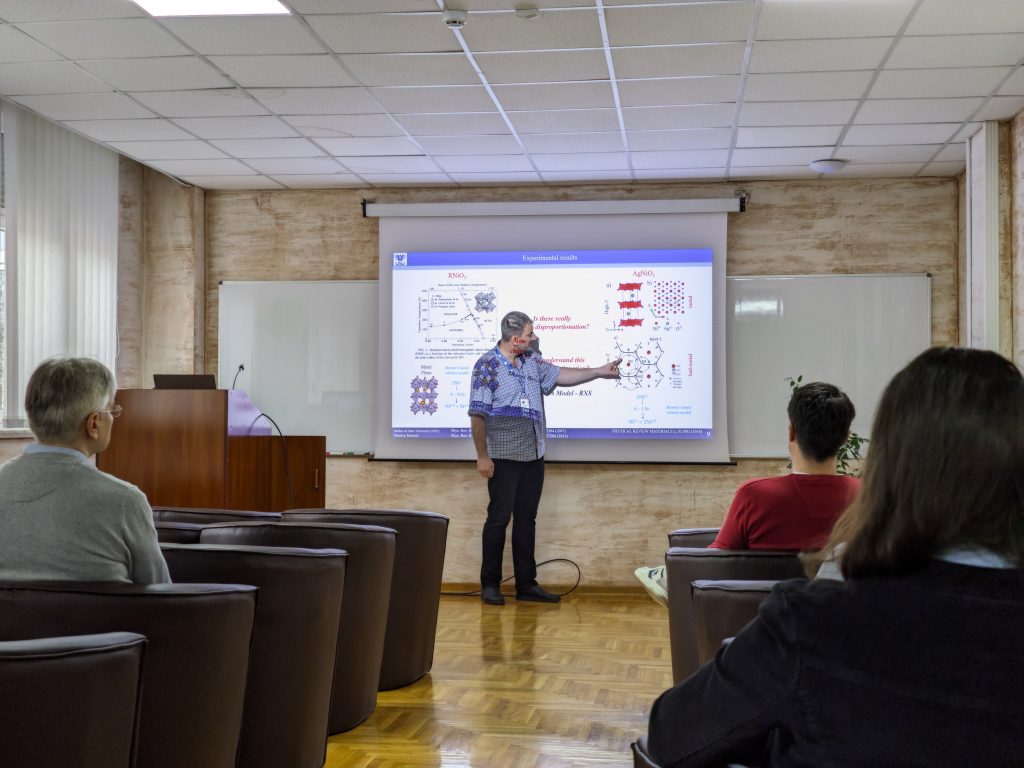

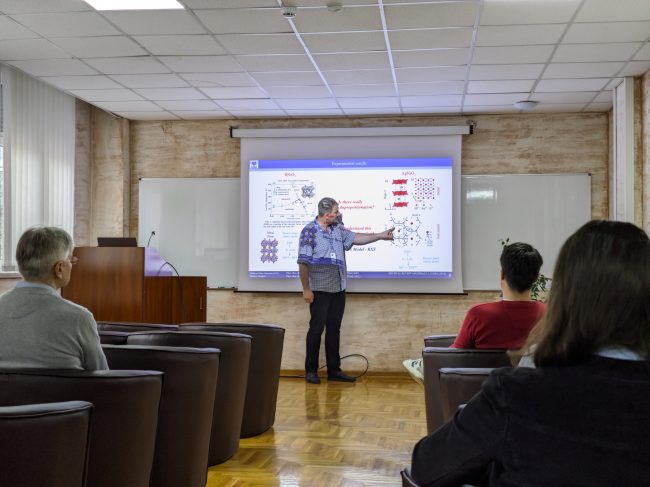
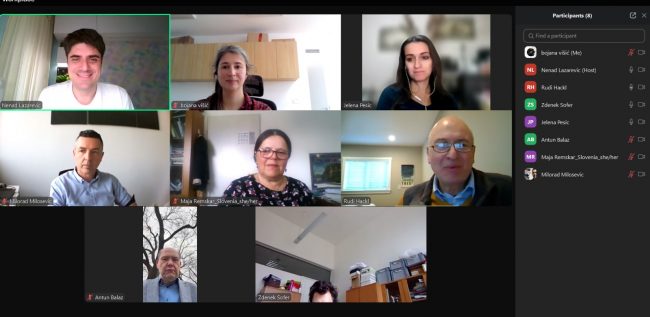

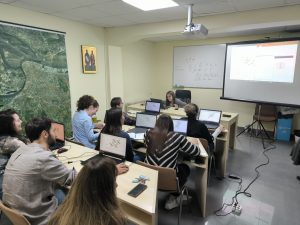 On Thursday, March 20, 2025, the workshop titled "Visualization and Analysis of Crystal Structures Using the VESTA Program" was successfully conducted at the seminar room of the Center for Solid State Physics and New Materials.
On Thursday, March 20, 2025, the workshop titled "Visualization and Analysis of Crystal Structures Using the VESTA Program" was successfully conducted at the seminar room of the Center for Solid State Physics and New Materials.
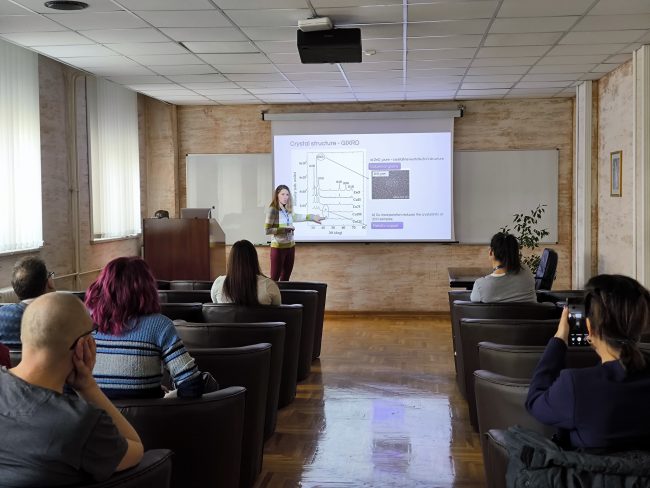

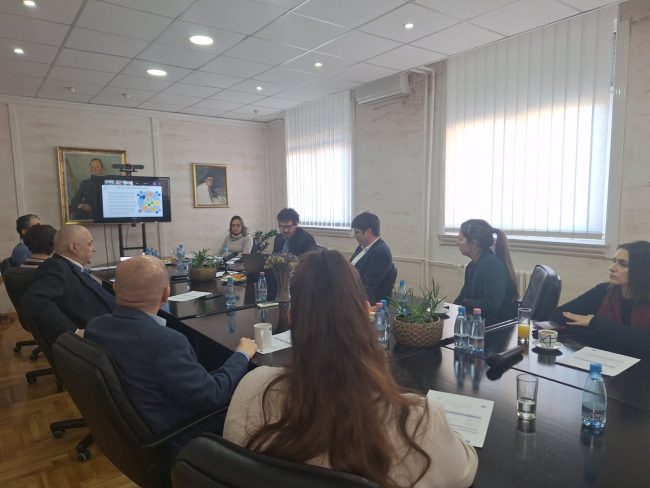
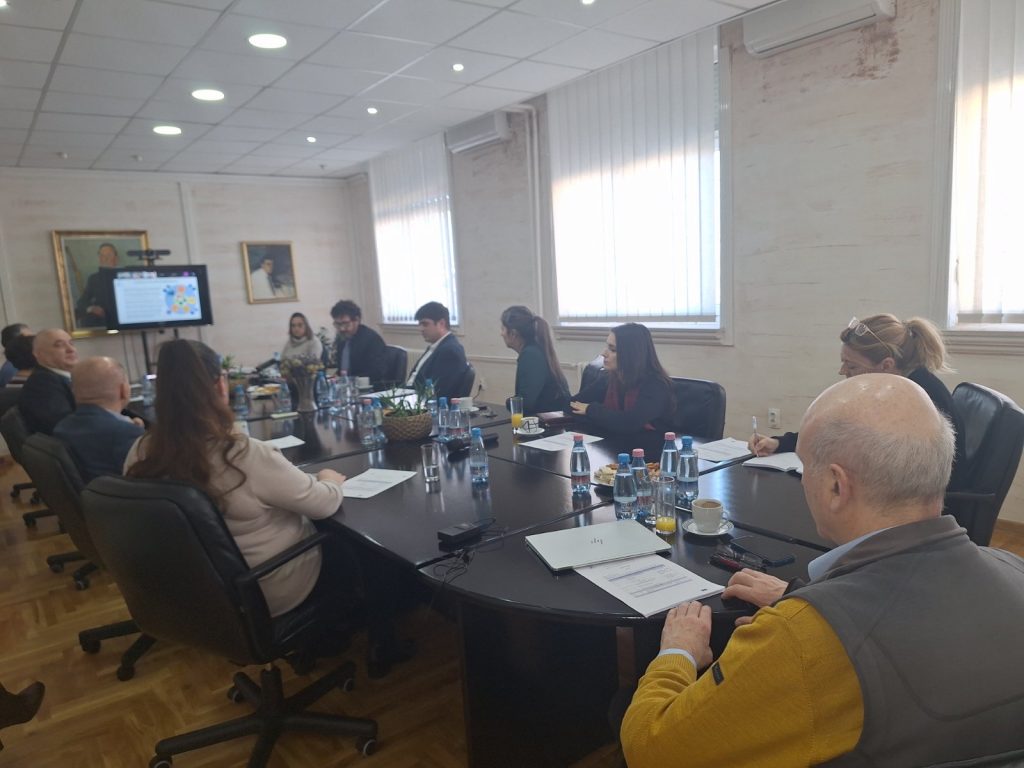
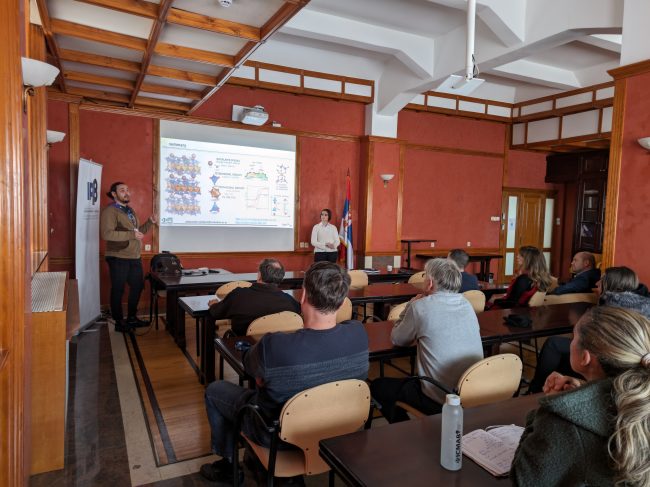

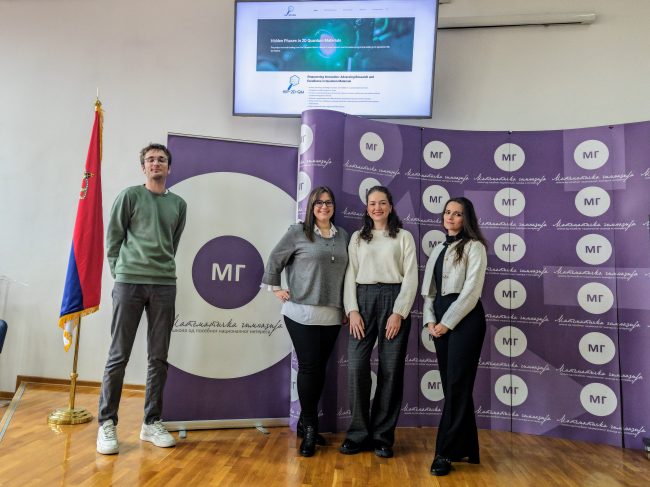
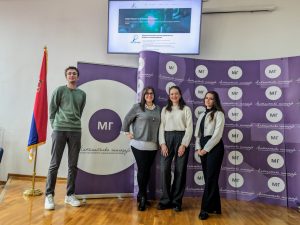 On November 27, 2024, Dr. Jelena Pešić from the Center for Solid State Physics and New Materials visited the Mathematical Grammar School (MGS), a specialized Serbian school dedicated to talented students in mathematics, physics, and computer science, to deliver an engaging presentation.
On November 27, 2024, Dr. Jelena Pešić from the Center for Solid State Physics and New Materials visited the Mathematical Grammar School (MGS), a specialized Serbian school dedicated to talented students in mathematics, physics, and computer science, to deliver an engaging presentation.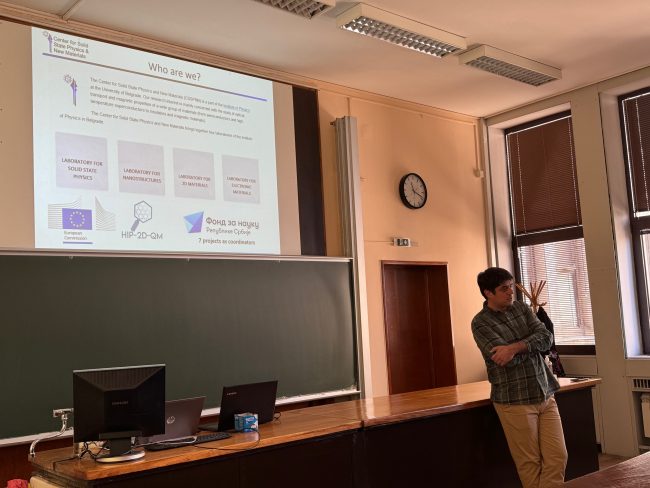
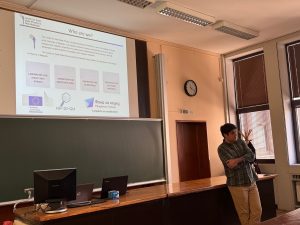 On Wednesday, November 6, 2024, Dr. Nenad Lazarević delivered a presentation to students from the Faculty of Physics. The talk introduced the Center for Solid State Physics and New Materials and provided an overview of the Horizon Europe project HIP-2D-QM (Hidden Phases in 2D Quantum Materials).
On Wednesday, November 6, 2024, Dr. Nenad Lazarević delivered a presentation to students from the Faculty of Physics. The talk introduced the Center for Solid State Physics and New Materials and provided an overview of the Horizon Europe project HIP-2D-QM (Hidden Phases in 2D Quantum Materials).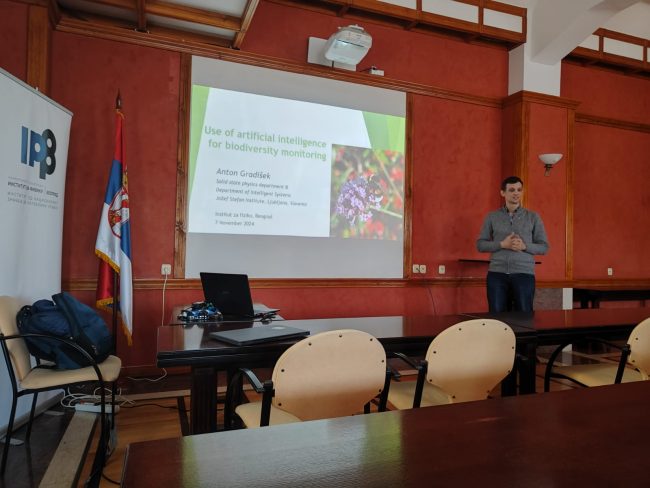
 On Thursday, November 7, 2024, at 13:00, the Center for Solid State Physics and New Materials held a seminar in the library reading room “Dr. Dragan Popović” at the Institute of Physics Belgrade.
On Thursday, November 7, 2024, at 13:00, the Center for Solid State Physics and New Materials held a seminar in the library reading room “Dr. Dragan Popović” at the Institute of Physics Belgrade.